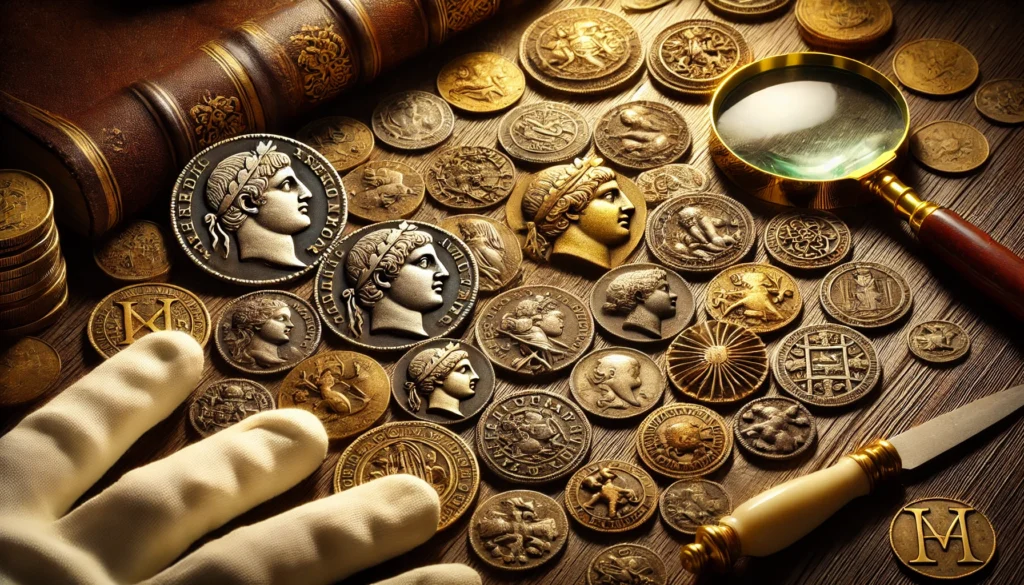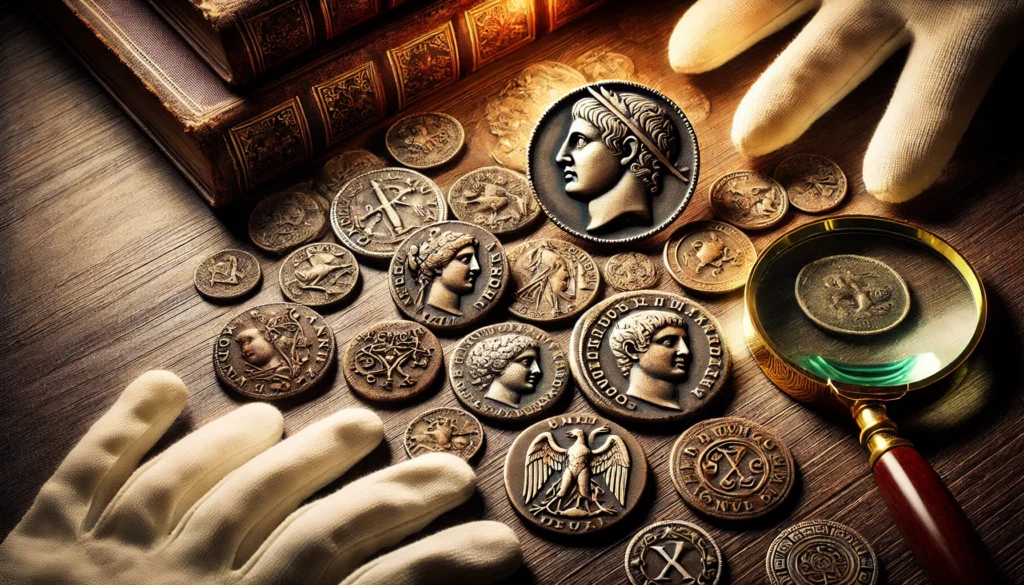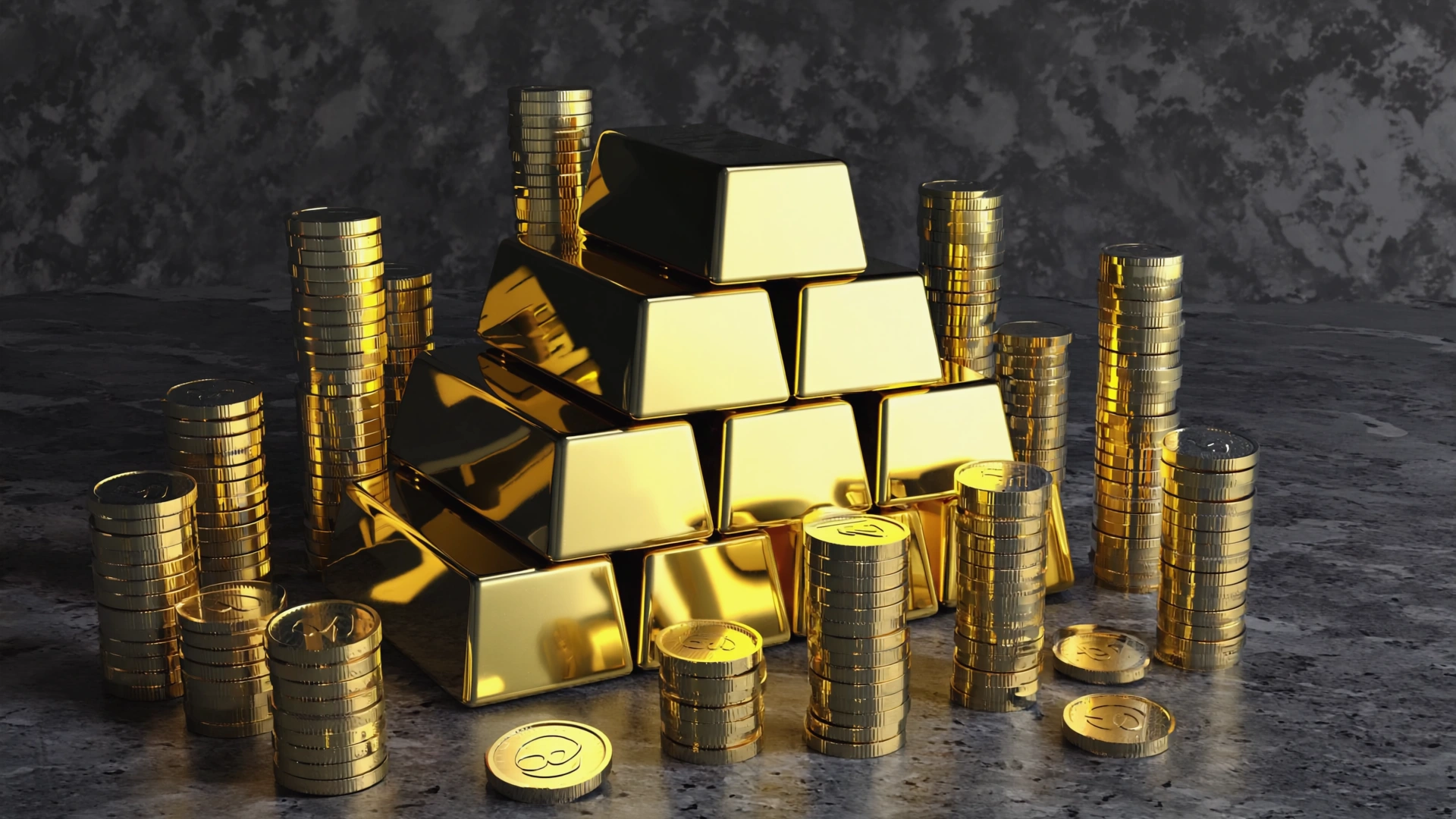Why Coin Collecting is More Than Just a Hobby
Introduction to Numismatics
Coin collecting, also known as numismatics, has captivated collectors, historians, and investors for centuries. In 2025, numismatics is experiencing renewed interest, driven by rising precious metal prices, an expanding online marketplace, and a growing appreciation for historical artifacts. While some collectors focus on modern bullion coins like American Silver Eagles or Canadian Maple Leafs, others specialize in rare historical coins, error coins, and high-grade numismatic treasures.
This numismatics guide provides an in-depth look at how to start collecting coins, identify valuable pieces, avoid common mistakes, and turn numismatics into a rewarding long-term pursuit.

📘 Download the full guide: Numismatics Handbook — A +135-page expert resource on U.S. coin collecting.
1. What is Numismatics?
Numismatics is the study and collection of coins, currency, and medals. Unlike general investing in gold or silver bullion, numismatics involves historical, artistic, and rarity-based value beyond just metal content. Collectors often seek coins with specific features such as mint marks, proof finishes, or historical significance.
Key Numismatic Terms:
- Mintage: The total number of coins produced for a particular issue.
- Mint Mark: A small letter indicating where the coin was minted (e.g., “D” for Denver, “S” for San Francisco).
- Proof Coins: Specially struck coins with a high-quality finish made for collectors.
- Error Coins: Coins with production mistakes, such as doubled-die strikes or off-center minting, often commanding high premiums in the market.
2. Why Start Collecting Coins in 2025?
The numismatic market is thriving in 2025 due to several key factors:
- Increased Precious Metals Demand: Many collectors use numismatics as a hedge against inflation, much like bullion stacking. Coins containing gold and silver maintain intrinsic value even in volatile markets.
- Rise of Online Marketplaces: The ability to buy and sell coins online has never been easier, with reputable platforms like Heritage Auctions, eBay, and PCGS-certified marketplaces offering secure transactions.
- Growing Popularity of Historical Coins: Coins such as the 1943 Steel Penny, 1965 Quarter (silver transition error), and early American gold pieces continue to attract serious interest from collectors and investors alike.
3. Which Coins Should You Collect First?
For beginners, it is best to start with coins that are both accessible and have potential for appreciation. Consider these foundational categories:

- Lincoln Wheat Pennies (1909-1958): Includes valuable rarities such as the 1944 Steel Penny and 1955 Doubled Die.
- Buffalo Nickels (1913-1938): A classic design with high collector appeal, especially in better grades.
- Morgan Silver Dollars (1878-1921): Among the most collected silver coins in U.S. history.
- 2023 Error Quarters: Modern errors can appreciate significantly in value over time.
Collectors looking for an investment angle might focus on rare date key coins, certified proof sets, or high-grade pre-1933 U.S. gold coins.
4. How to Find Valuable Coins Without Overspending
Many new collectors wonder where to find valuable coins affordably. Consider the following sources:
- Pocket Change Hunting: Some rare coins, including error coins, are still in circulation, such as the 1969-S doubled-die Lincoln cent.
- Bank Rolls & Coin Roll Hunting: Buying rolls of pennies, nickels, or half-dollars from banks can yield unexpected treasures.
- Estate Sales & Garage Sales: Many old collections surface at estate liquidations, often at bargain prices.
- Online Auctions & Dealers: Platforms like eBay, PCGS, or APMEX provide a structured way to acquire graded coins with verified authenticity.
5. Common Mistakes to Avoid in Coin Collecting
- Buying Counterfeit or Altered Coins: Always purchase from reputable dealers and ensure third-party certification.
- Ignoring Coin Grading: Condition heavily influences value. Learn the grading scale from Poor (P-1) to Mint State (MS-70).
- Improper Storage: Coins should be stored in air-tight holders or archival-grade flips to prevent damage.
- Impulse Buying Without Research: Prices fluctuate, and knowledge is key to making sound investment decisions.

6. Where to Sell & Trade Coins
Once a collection grows, collectors may wish to trade or sell pieces. The best avenues include:
- Certified Coin Dealers: Well-known dealers such as APMEX, PCGS, and Heritage Auctions offer secure selling opportunities.
- Online Marketplaces: eBay, Facebook Marketplace, and numismatic forums provide large audiences but require careful transaction management.
- Coin Shows & Conventions: Major numismatic events attract serious buyers and can yield competitive offers.
- Local Coin Shops: These provide instant cash offers but should be compared with online pricing to ensure fair value.

Final Thoughts: Turning Numismatics Into a Long-Term Asset
Numismatics is more than a hobby; it is an avenue to preserve history, appreciate art, and build wealth. Whether collecting for fun, investment, or both, the right approach can turn a coin collection into a valuable long-term asset.
Next Steps:
- Visit our Youtube Channel to be on top of the gold and silver news
- Start small with common yet collectible coins such as Lincoln Wheat Pennies or Buffalo Nickels.
- Educate yourself on grading and authentication through PCGS and NGC resources.
- Keep an eye on emerging rare coins like modern error coins, which can become highly sought-after over time.
- Properly store and document your collection to maintain its condition and resale value.
Do you want to learn about Stacking Gold and Silver Efficiently? Check our Stacker’s Handbook
For exclusive numismatic gear visit our Stacker’s Gear Store.
FAQs: Numismatics Guide for Coin Collectors in 2025
What is numismatics and why is it important in coin collecting?
Numismatics is the study and collection of coins, currency, and medals. A good numismatics guide helps collectors understand coin history, grading, minting, and how rarity impacts value—key factors in building a valuable collection.
What are the best coins to start with in a beginner’s numismatics guide?
Popular starting points include Lincoln Wheat Pennies, Buffalo Nickels, Morgan Silver Dollars, and modern error coins. These coins are affordable, widely collected, and commonly featured in beginner numismatics guides.
What makes a coin valuable in numismatics?
In numismatics, value depends on four main factors: rarity, condition (grade), demand, and historical significance. A coin listed in a numismatics guide as a “key date” or with a major error can be worth significantly more than face value.
How can I tell if my coin is rare or part of a valuable numismatic set?
Consult a certified numismatics guide (like PCGS CoinFacts or the Red Book) to identify key dates, mint marks, and known varieties. Rare coins often have low mintage numbers, error features, or unique historical relevance.
What role does coin grading play in numismatics?
Grading is crucial in numismatics. A coin’s grade—from Poor (P-1) to Mint State (MS-70)—determines its market value. Most numismatics guides explain the Sheldon grading scale and recommend third-party grading services like PCGS or NGC.
Should I clean coins in my numismatics collection?
No. Cleaning coins can permanently damage their surfaces and reduce value. Most expert numismatics guides strongly advise against cleaning, especially with chemicals or abrasives.
Where can I buy coins for my numismatic collection?
Buy from certified dealers, online auctions, and numismatic marketplaces like APMEX, Heritage Auctions, or PCGS-certified eBay listings. A reliable numismatics guide will help you verify authenticity and avoid counterfeits.
Can modern error coins be valuable in numismatics?
Yes. Modern error coins—such as doubled dies, clipped planchets, and off-center strikes—are frequently highlighted in numismatics guides for their collector appeal and profit potential.
How should I store my coins to preserve numismatic value?
Use archival-quality flips, air-tight holders, or slabs. Coins should be stored in a dry, temperature-stable environment. Most numismatics guides recommend avoiding PVC-based holders, which can degrade coins over time.
Can coin collecting through numismatics be profitable long-term?
Absolutely. While numismatics is often a passion project, strategic collectors can build long-term wealth by focusing on rare coins, certified high-grade pieces, and undervalued issues highlighted in expert numismatics guides.

